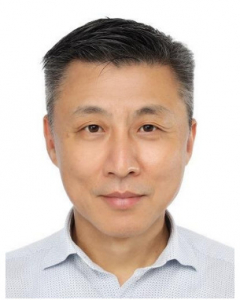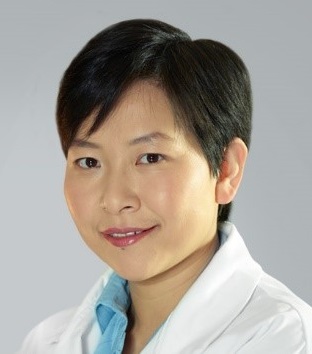 | Nothing is better than silica |
| Prof. Sir David Payne | |
| University of Southampton, United Kingdom |
Biography
Professor Sir David Neil Payne CBE FRS FREng is a leading Professor at the University of Southampton and Director of the Zepler Institute for Photonics and Nanoelectronics/Optoelectronics Research Centre. A world class pioneer of technology, his work has had a great impact on telecommunications and laser technology over the last forty years. The vast transmission capacity of today’s internet results directly from the erbium-doped fibre amplifier (EDFA) invented by David and his team in the 1980s. His pioneering work in fibre fabrication in the 70s resulted in almost all the special fibres in use today including fibre lasers which are undergoing rapid growth for application in manufacturing and defence.
David has made numerous leading contributions to many diverse fields of photonics and is widely acknowledged as an inventor of key components. With US funding, he led the team that broke the kilowatt barrier for fibre laser output to international acclaim and now holds many other fibre laser performance records. An original member of the Highly Cited Researchers (USA) he is honoured as one of the most referenced, influential researchers in the world. He has published over 650 Conference and Journal papers.
As an entrepreneur David’s activities have led to a cluster of 11 photonics spin out companies in and around Southampton - helping to boost the local economy. He co-founded SPI Lasers, now owned by Trumpf Group. He is an Emeritus Chairman of the Marconi Society and a foreign member of the Russian and Norwegian Academy of Sciences, the Indian National Science Academy (INSA) and the Indian National Academy of Engineering (INAE). David is a fellow of the Optical Society of America, the IET (UK), the Royal Society and the Royal Academy of Engineering. He holds three honorary Professorships from Chinese Universities. He co-founded The Photonics Institute in NTU that has grown to be the leading photonics institute in Singapore.
 | Challenges and Opportunities for Future Optical Communication Systems and Networks |
| Prof. Chao LU | |
| Sun Yat-sen University, China |
Abstract
Optical communication systems and networks have been the key infrastructure supporting the ever increasing internet capacity requirement. Single mode fiber link in C band has more or less reached its capacity limit, how to further increase optical fiber link capacity has been a research challenge. At the same time, increasing capacity utilization of current optical network will also help to satisfy the capacity need. In this talk, research challenges and efforts to increase capacity of optical communication links will be described. Various device and system technology for future optical communication systems and networks will be discussed. In addition, the possibility of using existing optical fiber for monitoring physical parameter variation to enable better maintenance of optical networks as well as providing additional information about the change of our physical world will be explored.
Biography
Chao LU obtained his BEng in Electronic Engineering from Tsinghua University, China in 1985, and his MSc and PhD from University of Manchester in 1987 and 1990 respectively. He joined the School of Electrical and Electronic Engineering, Nanyang Technological University (NTU), Singapore as a faculty member in 1991 and was there until 2006. From June 2002 to December 2005, he was seconded to the Institute for Infocomm Research, Agency for Science, Technology and Research (A*STAR), Singapore, as Program Director and Department Manager leading a research group in the area of optical communication and fibre devices. He joined the Department of Electronic and Information Engineering, The Hong Kong Polytechnic University in 2006 and has been Chair Professor of Fibre Optics and Director of the Photonics Research Institute. Since late 2022, he has been with Sun Yat-sen University, China. His research interests are in the area of high capacity transmission techniques for long haul and short reach systems and distributed optical sensing systems. In addition to academic research work, he has had many industrial collaborative research projects and has a number of awarded patents. His current research interests are in the area of high capacity transmission techniques for long haul and short reach systems and distributed optical sensing systems. He is a fellow of the Optical Society (OPTICA).
 | Laser nanoprinted integrated photonic devices |
| Prof. Baohua Jia | |
| School of Science, RMIT University, Australia |
Abstract
This presentation mainly introduces the interaction between 3D nanoprinting and various materials at the angstrom scale. Describe the precise and unparalleled manipulation of materials by nanoprinting at the spatial, temporal and atomic scales. In particular, the application status and broad prospects of optical nanoprinting and two-dimensional photonic integrated devices are introduced in detail. The report will also share the future development directions of ultrafast optical nanoprinting and angstrom material devices, and the major challenges faced. The developed scalable graphene metamaterials show attractive optical and thermal properties. Through patterning with advanced laser nanoprinting technique, functional photonic devices with ultrathin, light weight and flexible nature have been demonstrated promising exciting opportunities for integrated photonics.Biography
Professor Baohua Jia is a Future Fellow and Director of Centre for Atomaterials and Nanomanufacturing at RMIT University, Australia. Before joining RMIT University in 2022, Baohua was a tenured professor at Swinburne University of Technology and Founding Director of Centre for Translational Atomaterials. Professor Jia is a Fellow of Optica (previously known as the Optical Society of America), and a Fellow of the Institute of Materials, Minerals and Mining (IMO3). Since 2019, Prof. Jia has served as a Colleague of Expert for the Australian Research Council. Professor Jia's research focuses on the design and optical characterization of novel nanostructures and nanomaterials, fabrication, and efficient conversion and storage of light energy. As a leading Chief Investigator, Professor Jia received a total of more than $35 million in research funding support. Professor Jia has published more than 300 journal papers, and developed more than 20 invention patents and patent applications. Based on Professor Jia's outstanding contributions in scientific research, she has won many awards, including the 2017 finalist of the Australian Prime Minister's Science Award, the Vice Chancellor's Industrial Achievement Award in 2011, 2016, and 2018 , 2013, Young Science Leader Award, 2012 UNESCO L'Oréal Australia New Zealand Women in Science Award.
SUBMISSION
 REGISTRATION
REGISTRATION
SHARE THIS CONFERENCE
- ICOCN'2022 in Shenzhen
- ICOCN'2021 Online
- ICOCN'2019 in Huangshan
- ICOCN'2018 in Zhuhai
- ICOCN'2017 in Wuzhen
- ICOCN'2016 in Hangzhou
- ICOCN'2015 in Nanjing
- ICOCN'2014 in Suzhou
- ICOCN'2013 in Chengdu
- ICOCN'2012 in Pattaya
- ICOCN'2011 in Guangzhou
- ICOCN'2010 in Nanjing
- ICOCN'2009 in Beijing
- ICOCN'2008 in Singapore
- ICOCN'2007 in Taxila
- ICOCN'2006 in Jiuzhaigou
- ICOCN'2005 in Bangkok
- ICOCN'2004 in Hong Kong
- ICOCN'2003 in Bangalore
- ICOCN'2002 in Singapore

